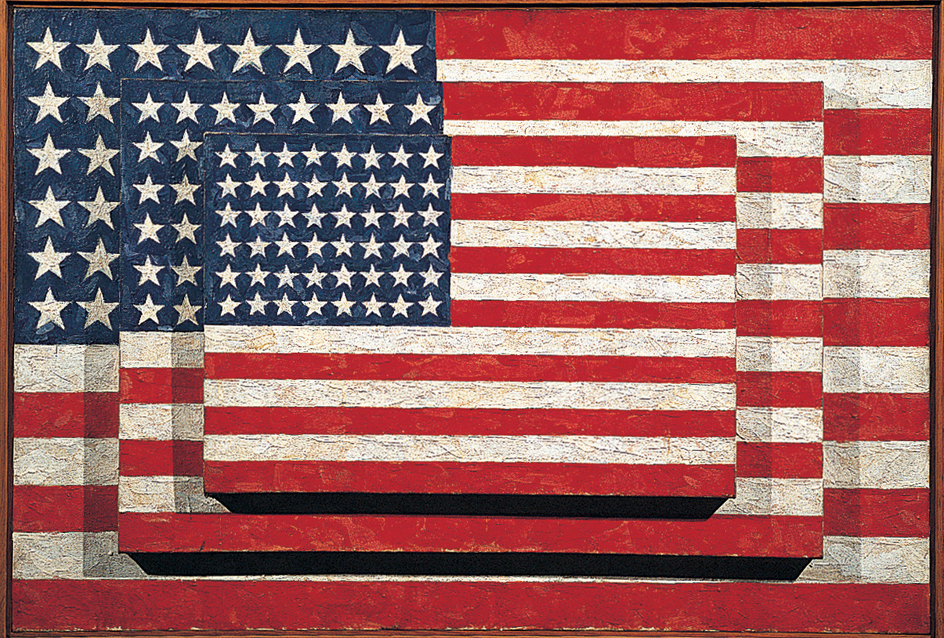Johns, Jasper (1930-…), is an influential American painter, sculptor, and printmaker. Along with his colleague Robert Rauschenberg, Johns is credited with injecting new subject matter into American painting that stressed items familiar in everyday life. Their work is considered the link between Abstract Expressionism of the 1940’s and 1950’s and Pop Art of the 1960’s.
Johns often uses common, visually bland objects as his subjects. He became particularly known for his paintings of flags, maps, targets, numbers, and other subjects that are immediately recognizable. Johns has said that he chose to work with familiar symbols because they did not have to be designed or composed. According to Johns, they were “things the mind already knows.” Because the viewers did not have to occupy themselves with determining the meaning of the painting, they could instead concentrate on the qualities of the picture itself, such as its color and brushstrokes. Johns has painted in a medium known as encaustic, which is made from hot wax, sometimes applied over collage, in which paper and other flat materials are attached to the surface (see Collage ).

Johns has changed his subject matter during his career. Beginning in the 1960’s, his work became more personal, involving such themes as death, memory, and the cycle of life. Johns has always been interested in the work of other artists. His pictures, prints, and sculptures have been influenced by such artists as Paul Cézanne and Marcel Duchamp of France, Leonardo da Vinci of Italy, and Pablo Picasso of Spain. Johns’s love of poetry, notably the poems of the Americans Hart Crane and Frank O’Hara, has also helped shape his art.
In addition to his painting, Johns ranks among the most creative printmakers of his time. He also has applied his interest in common objects to sculpture, as in Painted Bronze (1960), which consists of two ale cans.

Johns was born in Augusta, Georgia, on May 15, 1930. He became famous with a one-man exhibition in New York City in 1958. Johns received the Presidential Medal of Freedom, one of the country’s highest civilian honors, in 2011.
